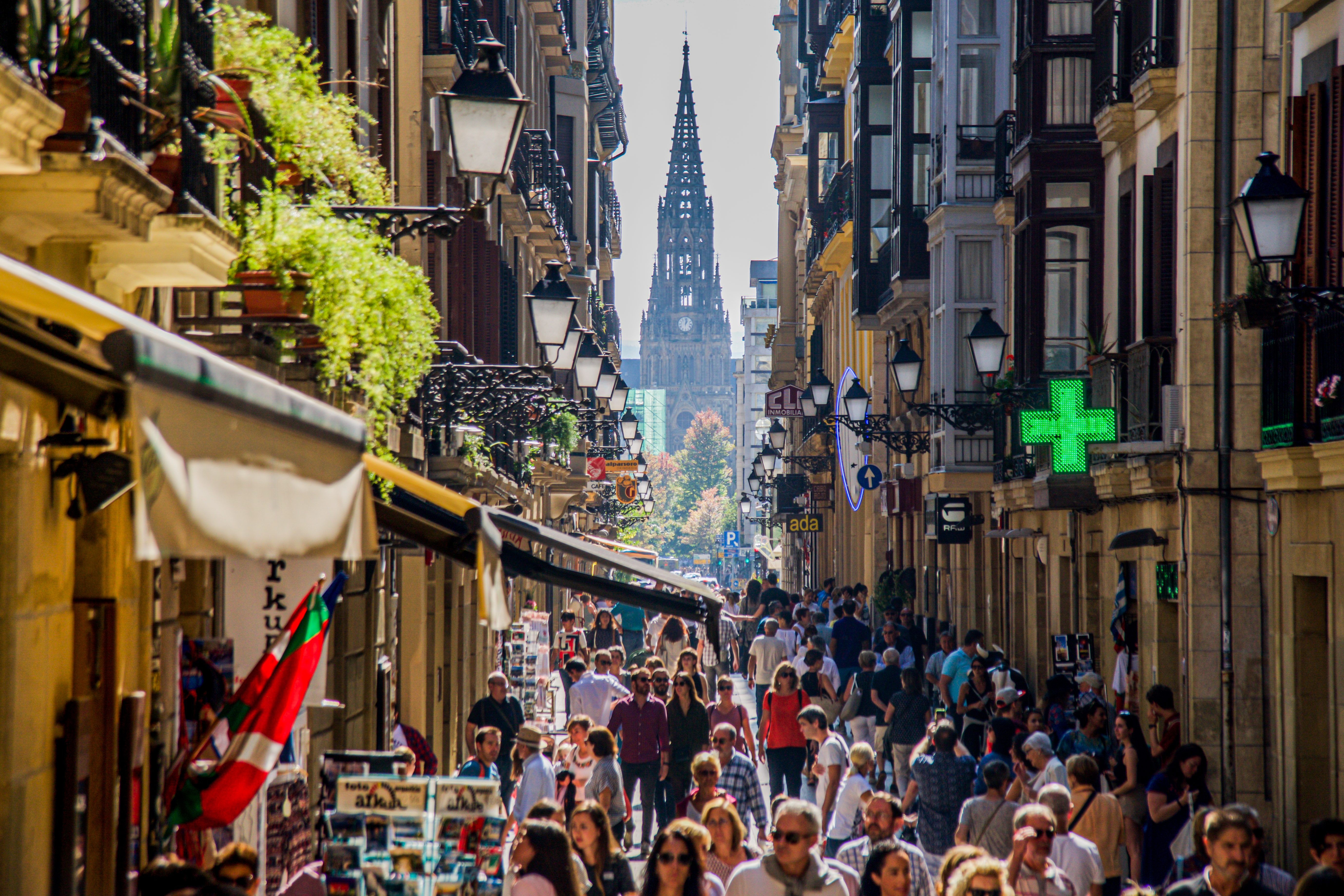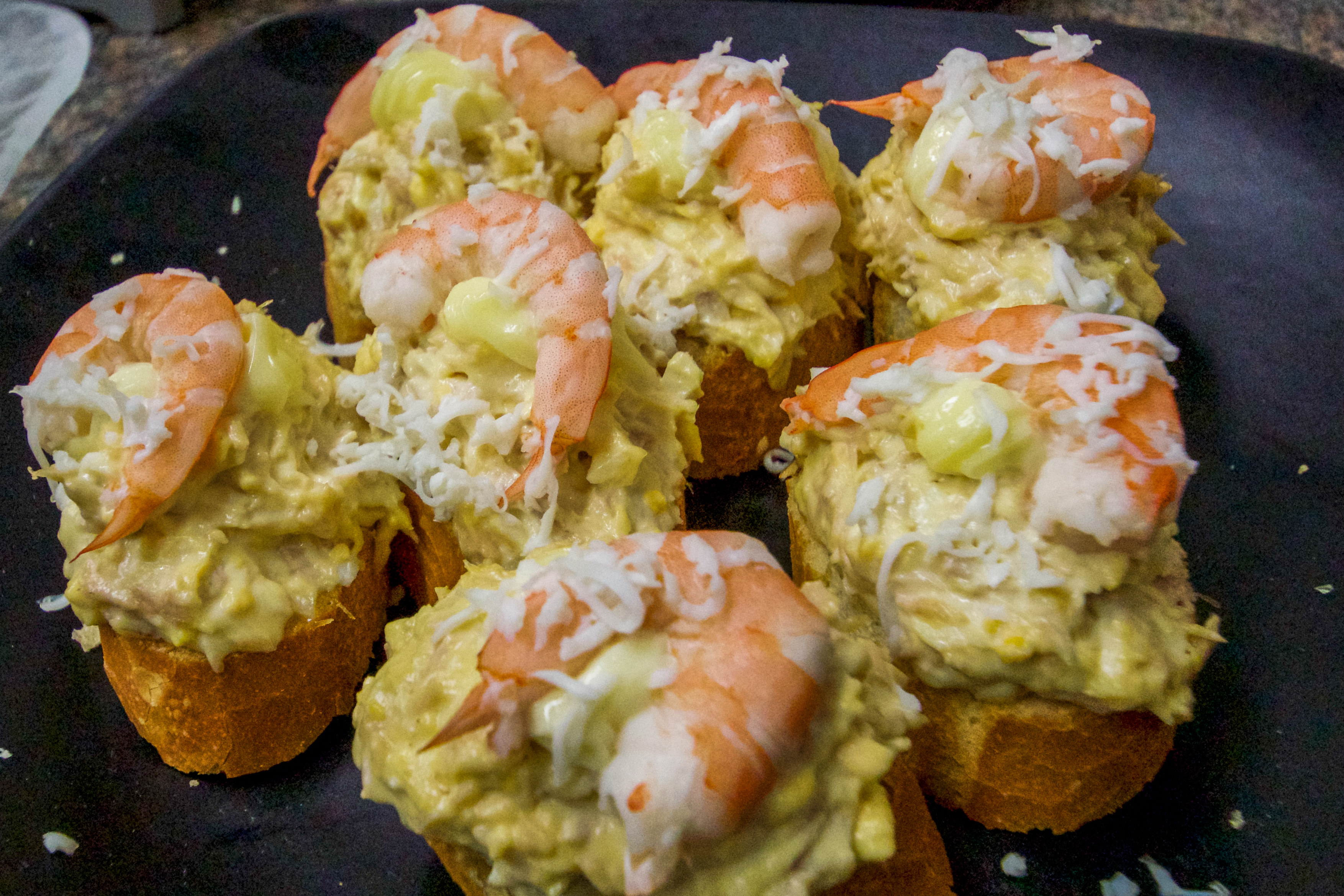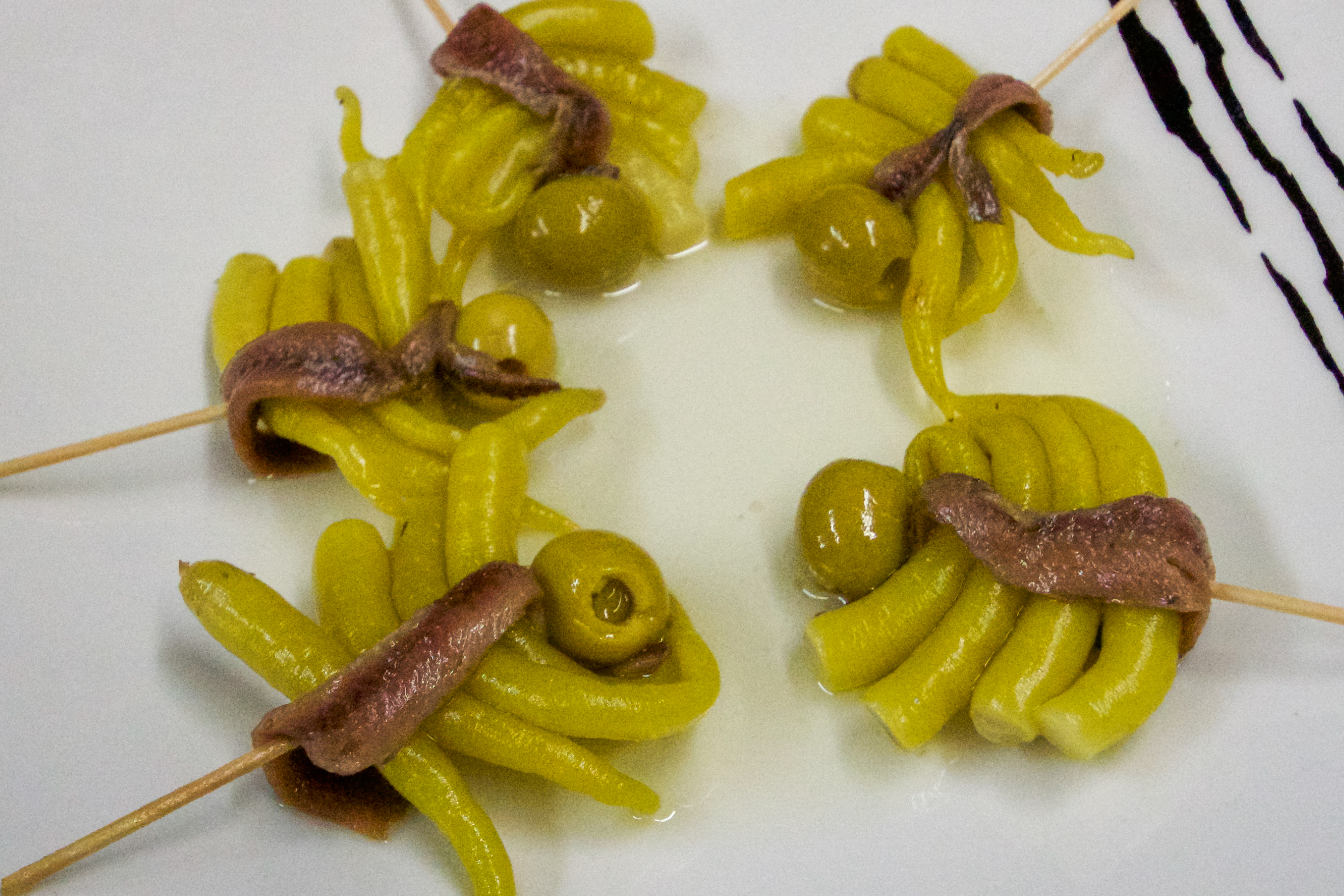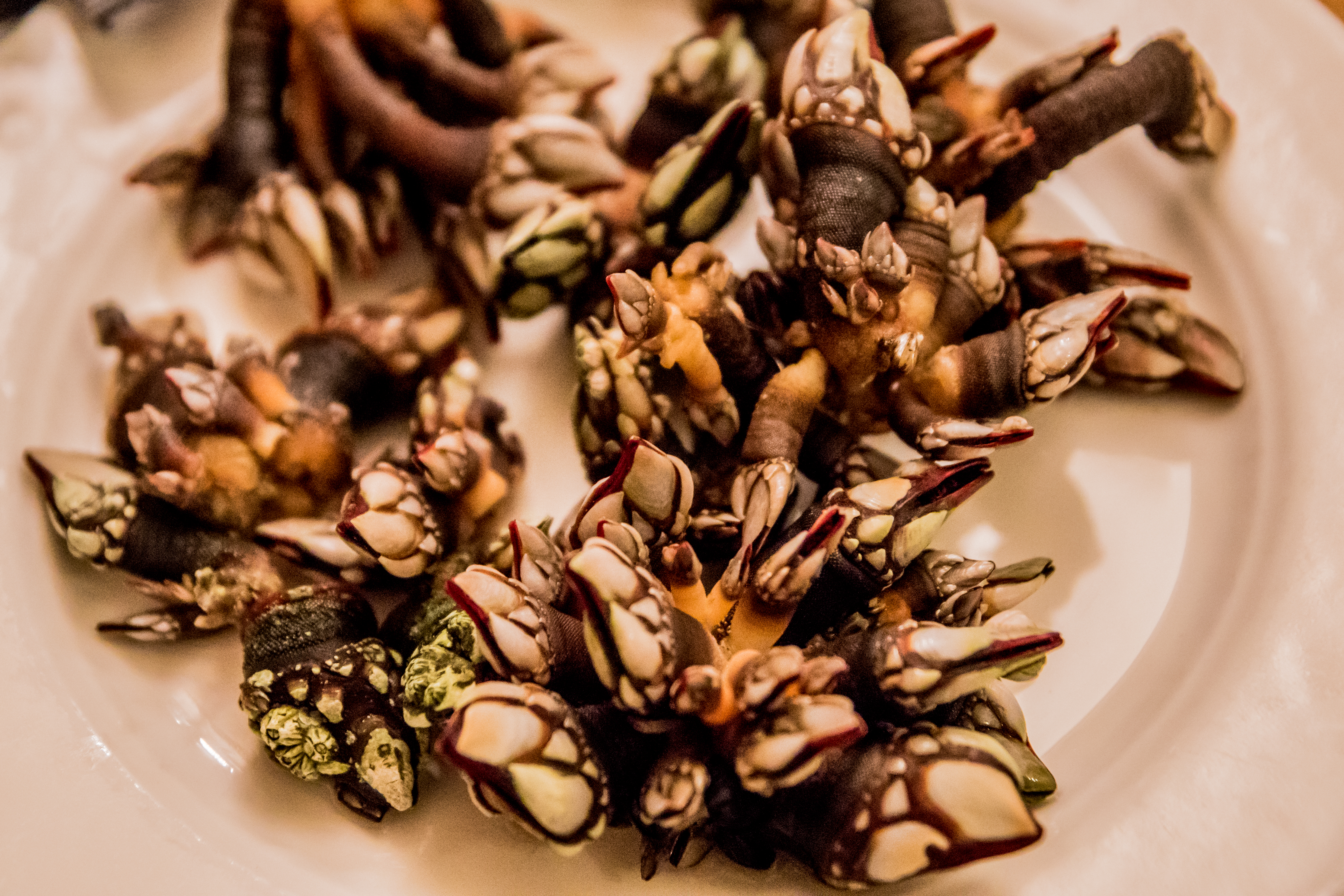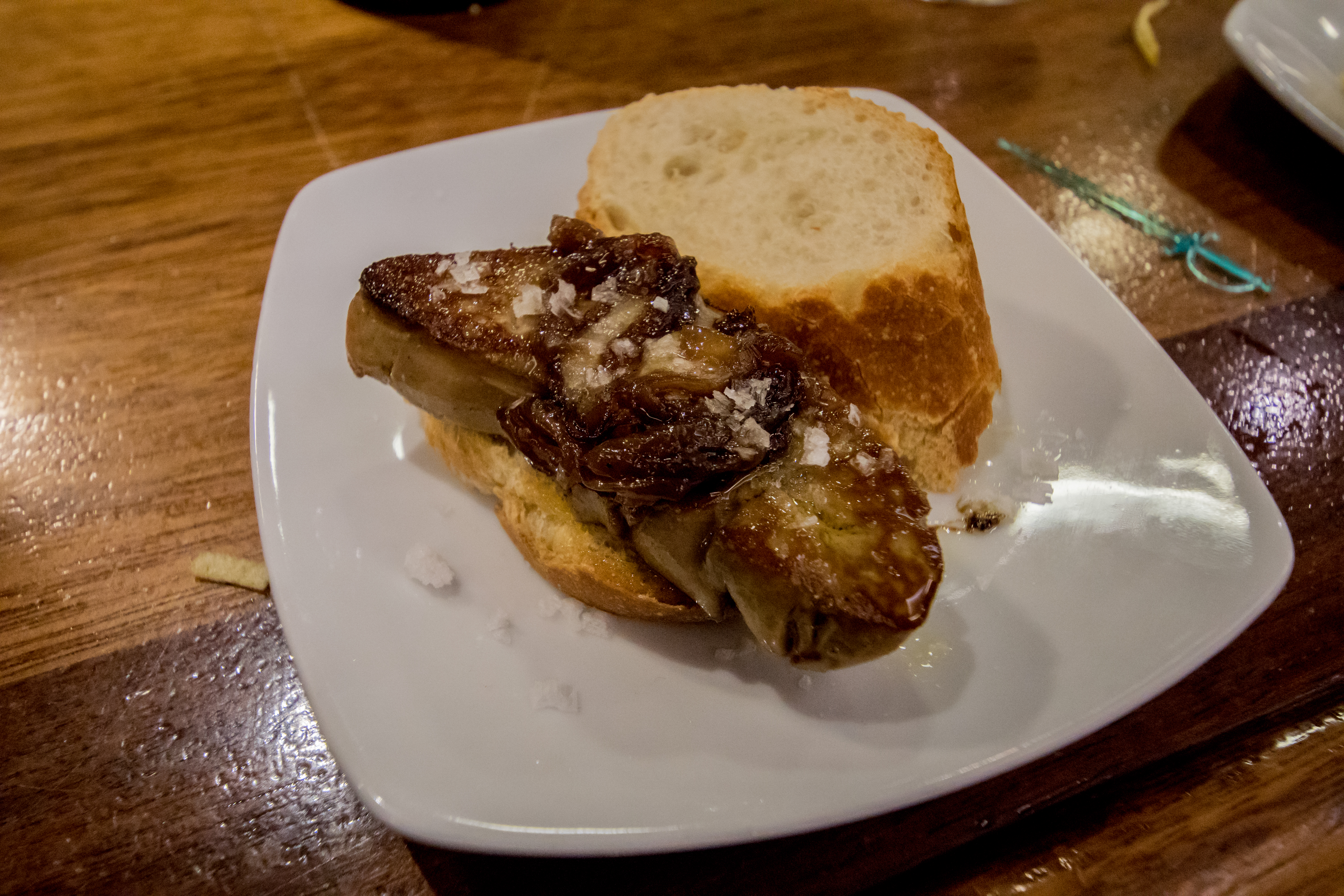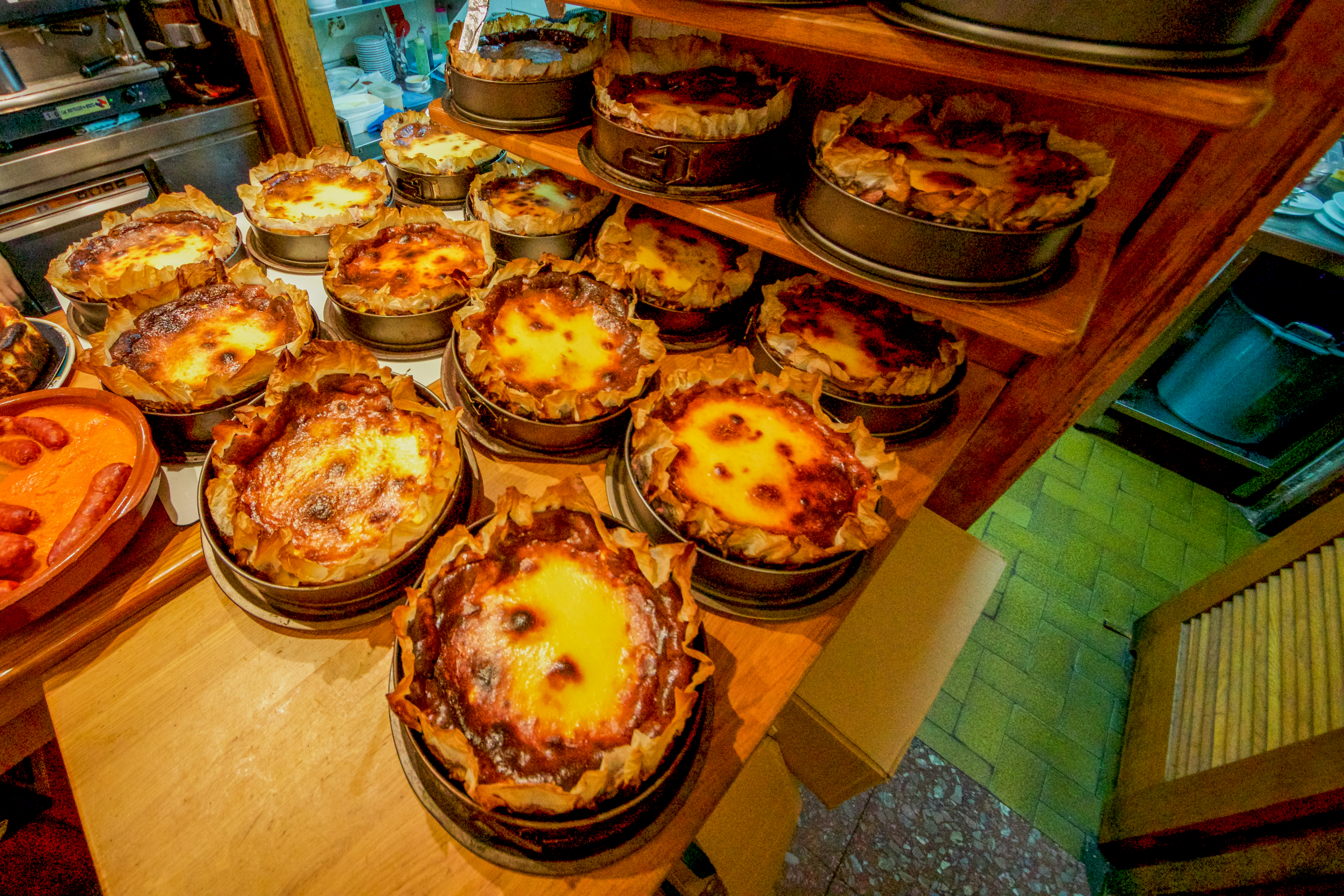Pile Your Plate High With Pintxos, The Bar Snacks Of Basque Country
In the city of San Sebastian, winding streets and narrow corridors are tightly packed with Basque Country's best pintxo bars, and they can be slightly overwhelming to the uninitiated. The counters at every single bar are heaped with colorful regional snacks, many of which are exclusive to the region. The menus at these pintxo bars are equally likely to be written in Spanish or Basque, but much of the time, you don't need a menu at all; bar patrons are encouraged to assemble a plateful of whatever speaks to them.
Pintxos are one of the most celebrated Basque creations, and that's saying something—this region straddling northern Spain and southern France is home to one of the oldest cultures in Europe. The Euskara language predates romance languages, cave drawings in the area date back thousands of years, and Basque whalers are believed to have sailed advanced ships to North America prior to Columbus, all of which demonstrates a historically fierce independent streak that you can even taste in the food, pintxos especially. They comprise a complex version of Spanish tapas that usually features multiple components held together by a pin (hence the name). You know a good pintxo when you see it: they're miniature works of art that call for a moment of appreciation before the first taste.
Primarily a breakfast snack to take alongside a morning coffee, pintxos sometimes function as an appetizer, or just the meal itself. When the bars close for mid-afternoon siestas, you're encouraged to pocket one for a naptime snack. To Americans, European businesses' siesta-accommodating schedule might seem choppy, but it effectively justifies a daylong cycle of leisurely eating and sleeping, punctuated by the occasional stroll along the beach.
The tradition of pintxos began in San Sebastian, a romantic seaside city with a beachfront framed by two mountains and idyllic Santa Clara Island. Tokyo might have more Michelin stars than any other city, but San Sebastian has the most per capita and bills itself as the culinary capital of Europe without hesitation.
The key to a successful pintxo crawl is to seek out each bar's specialties, though it's understandably challenging not to get distracted by the many irresistible tabletop smorgasbords. Eskerne Falcon, a Basque culinary expert from Discover San Sebastian, shared a list of can't-miss classics to enjoy once it's safe to share plates again.
Txakoli
Any great evening starts by pouring a glass of txakoli (pronounced like "chah-kuh-lee," nearly "chocolate"), a dry white wine from Basque Country. Tradition dictates that one raise the bottle as they pour, and once they can no longer hit the glass cleanly, they've had their fill. Atari Gastroleku, a bar adjacent to Basilica de Santa Maria del Coro, sells bottles that can be enjoyed alongside the overflow of revelers drinking on the church steps.
Shrimp
Shrimp is an abundant offering at San Sebastian's pintxo bars, but there's only one place to order it: Paco Bueno, an old-school joint favored by locals and adorned with sparse black and white photos and boxing memorabilia (the owner of the bar is a former boxer). There's typically an elderly woman peeling shrimp in the corner, and the bar counter looks unremarkable at first, featuring nothing more than egg sandwiches. But once it's ready to serve, the fried shrimp is a simple delicacy few can match.
The Gilda
The Gilda might be the most famous of the Basque pintxos; specifically it's a "banderillas," served on a skewer. The snack is inspired by actress Rita Hayworth, whom the city fell in love with during her trip to San Sebastian in 1950. Enamored with her fiery character in the movie of the same name, bar Casa Vallés created the "green, salty, and spicy" Gilda, a skewer of pepper, anchovy, and olive. To this day you'll find it at the front of any bartop spread.
Parcebes (aka Goose Barnacles)
This delicacy that resembles a dragon's toes is a crustacean harvested off jagged rocks by fisherman along the crashing shore. One of the premiere pintxo bars of the Old Town, Ganbara, has gained notoriety among many international visitors after being featured in Anthony Bourdain's Parts Unknown, making it a quintessential stop for tourists inspired by the late chef's visits to the city.
Fresh Grilled Foie Gras
If you ask a local to suggest their favorite pintxo, grilled foie gras will be the most common response. Though it's a controversial dish in the United States (foie gras was even banned in Chicago from 2006-2008), it's found in abundance and celebrated in the Basque region. Txuleta's grilled fresh foie gras topped with caramelized onion and apple sauce is one of those meals-unto-itself pintxos.
Burnt Basque-Style Cheesecake
No meal is complete without dessert and no pintxo crawl in San Sebastian is complete without La Vina's legendary, no-nonsense cheesecake. The burnt Basque style is said to have originated in the city in 1990. The now iconic fluffy charred cakes don't just cover the bar, but the shelves along the walls as well.
